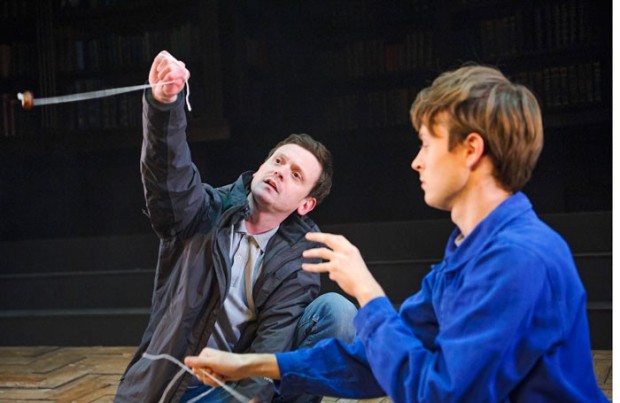You have no items in your cart. Want to get some nice things?
Go shopping
I’ve been thinking a lot, lately, about the Imagists. Pound in particular, and his relationship with Japanese poetry. What he inherited from the haikus of Basho et al, I would like to absorb into my own fiction: an economy of language, an attentiveness to the everyday, and – above all – a relish in simple and beautiful images. I recently re-read Lampedusa’s The Leopard, a novel which careers from image to fantastically rich image (I’m thinking particularly of the dream-like sequence at the book’s middle, in which a pair of young lovers explore a maze-like mansion, losing themselves along its corridors, stumbling across the occasional corpse of a cat or cupboard filled with instruments of torture). This abundance of imagery is brave, but braver still, I think, is its opposite: the pared-down text, Pound’s “petals on a wet, black bough”. How remarkable to invest one image with the weight of so much significance. To quote Pound again (this time from his essay, A Few Don’ts by an Imagiste): “It is better to present one Image in a lifetime than to produce voluminous works.”
Consciously or unconsciously, Robert Holman pays tribute to this edict (although, understandably, he does not limit himself to one image alone). His latest play, A Breakfast of Eels – currently showing at Notting Hill’s recently reopened Print Room – takes as its skeleton a series of clearly defined and striking images. They say a great deal, these five disparate images, and are endowed with so much importance. And yet they are incredibly simple.
Let’s list them here:
- The opening act begins with a wasp trapped in a jam jar (it will be killed at the end of the scene, crushed by the mushed-up fragments of an apple).
- Then a solitary balloon, tied to an envelope (containing within it the deeds to a house).
- The next scene, an outdoor scene, has at its end a home-made bow and arrow.
- My favourite image of the lot: a pot of pens and pencils resting on the grave of an erstwhile mother and journalist.
- And finally, a narrow smattering of snow.
There is an abundance within these images. Recurring themes of ephemerality (the snow melts; the balloon droops; the wasp dies), of creativity (the pens; the home-made bow), and of pain (the pierce of the arrow, pointed towards the audience; the sting of the wasp; the sharpness of the snow on the depressed protagonist’s bare feet). I am so admiring of their economy. In a climate where theatre so often aspires to the cinematic, the simplicity of Holman’s imagery comes as something of a relief.
His story, too, is simple: two young men establishing their relationship now that the parents of one and the adopted guardians of the other have died. “I can’t find our relationship in a book,” Penrose, the younger man, says to “the gardener”, “the man who does odd jobs about the house”, Francis. Both men have darknesses in their past, and there’s an element of darkness in their attitude towards one another, in their small acts of cruelty and moments of anger. They are very different, one endearingly eccentric, the heir to a Highgate fortune, the other a foster child from Northumberland, the victim of an abused childhood. And yet they are both very astute. They are both open to learning. They both sing.
Of course, an image-driven narrative is necessarily lacking in action. The relationship between the “brothers” unfolds slowly and quietly, a restraint with which Holman has become synonymous. In the script’s lulls, the play is made engaging by the quite exceptional performances of Matthew Tennyson and Andrew Sheridan (for whom, Holman purports in his accompanying essay, the play was written). They capture wonderfully the pendulum swing of the characters’ relationship, from protector and protected to protected and protector. And the images act like buttresses for this slow-moving shift in their dynamic, lifting the speech, giving us, the audience, license to think and wonder and imagine beyond the square-footage of the sparse set. These images tell stories that the words alone cannot.
In this respect, they remind me of the furniture in Larkin’s poem, “Home is so Sad”. The objects of this poem (“shaped to the comfort of the last to go/ As if to win them back”) are weighed down with despondency and expectation. The poem’s final lines strike me as some of the saddest in English literature. “You can see how it was,” the poetic voice tells us. “Look at the pictures and the cutlery./ The music in the piano stool. That vase.”
That vase. As powerful and as tragic as the most rambling of Lampedusa’s descriptions. Empty and hopeful and still. Holman taps into this power with his pot of pencils on the mother’s grave; untouched, but full of promise. It is a quiet image, at the heart of an equally quiet play. But the quietness here will stay with you for longer than most roars.
A Breakfast of Eels continues at The Print Room until April 11. Tickets are £25 (£17 concessions).

About Xenobe Purvis
Xenobe is a writer and a literary research assistant. Her work has appeared in the Telegraph, City AM, Asian Art Newspaper and So it Goes Magazine, and her first novel is represented by Peters Fraser & Dunlop. She and her sister curate an art and culture website with a Japanese focus: nomikomu.com.




